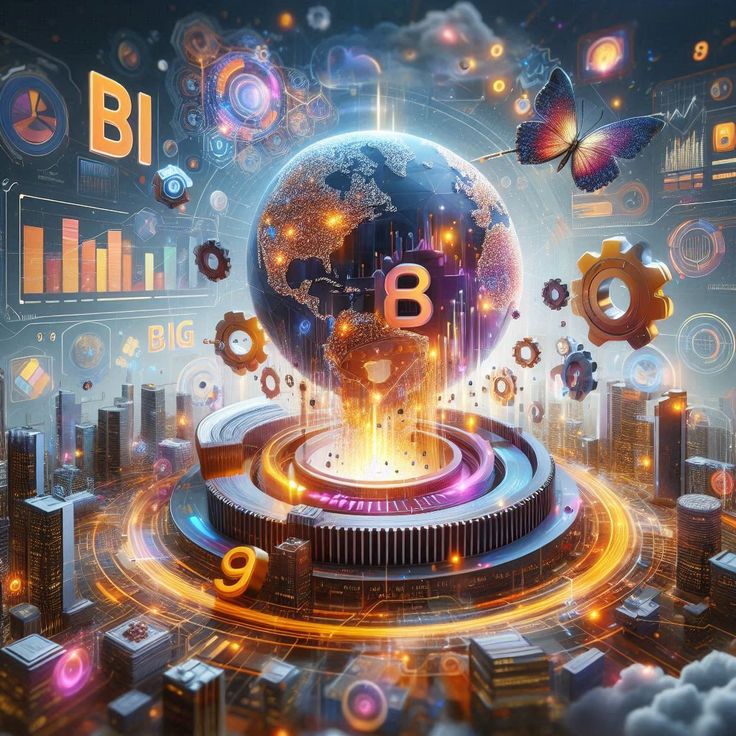How AI Understands, Predicts, and Controls the Employee Life Cycle: Enhancing Employee Experience and Business Impact

Artificial Intelligence (AI) is transforming the way organizations manage the employee life cycle by providing deep insights, predictive capabilities, and actionable strategies. By understanding the various stages of an employee’s journey—from recruitment to retirement—AI helps organizations predict potential outcomes and control key aspects of this journey to enhance employee experience and drive business impact. Through data-driven analysis and real-time monitoring, AI enables organizations to make informed decisions that attract top talent, improve retention, and foster long-term growth.
Here’s how AI can contribute to understanding, predicting, and controlling the employee life cycle:
1. Recruitment and Onboarding:
AI in Talent Acquisition:
AI can analyze resumes, past performance data, and social profiles to predict which candidates are likely to succeed in the organization. It can also match candidates with roles that best fit their skills and career goals, improving both retention and job satisfaction.
Onboarding Experience:
AI-driven chatbots and onboarding tools can guide new employees through the process, reducing anxiety and ensuring they are well-integrated into the company culture. This leads to higher engagement and lower turnover rates.
2. Performance Management:
Predicting Performance Trends:
AI can analyze an employee’s historical performance data, feedback from peers, and other relevant metrics to predict future performance trends. This helps managers proactively address issues or provide development opportunities before they escalate.
Customized Development Plans:
AI can recommend personalized training and development programs based on an employee’s strengths, weaknesses, and career aspirations, improving job satisfaction and productivity.
3. Employee Engagement:
Real-time Feedback Analysis:
AI tools can continuously monitor employee feedback through surveys, social media, and internal communication channels to gauge engagement levels. Natural Language Processing (NLP) can detect sentiment trends and highlight areas of concern.
Predicting Attrition:
AI can analyze patterns such as declining engagement, missed deadlines, or frequent sick leaves to predict the likelihood of employee turnover. Early intervention can be planned to retain valuable talent.
4. Career Development:
Career Path Prediction:
AI can predict potential career paths for employees based on their skills, interests, and past performance. By offering tailored career development opportunities, organizations can enhance employee satisfaction and retention.
Identifying Leadership Potential:
AI can analyze behavioral data and performance metrics to identify employees with high leadership potential, ensuring that the organization can build a strong pipeline for future leadership roles.
5. Employee Well-being:
Well-being Monitoring:
AI-driven platforms can monitor employee well-being through data from wearable devices, productivity metrics, and engagement surveys. By identifying stress patterns or burnout risks, organizations can take proactive steps to support employee health.
Work-life Balance Recommendations:
AI can suggest personalized work-life balance strategies by analyzing work patterns, ensuring employees maintain a healthy balance, which in turn positively impacts productivity and satisfaction.
6. Retention and Succession Planning:
Predicting Tenure:
AI can estimate the likely tenure of an employee based on various factors such as job satisfaction, engagement levels, and external job market conditions. This helps organizations in succession planning and reducing turnover costs.
Proactive Retention Strategies:
By understanding the factors that contribute to employee attrition, AI can suggest targeted retention strategies, such as offering personalized career development programs or adjusting compensation packages.
7. Retirement and Exit:
Exit Trend Analysis:
AI can analyze exit interview data to identify common reasons for departure. This helps organizations refine their employee retention strategies and improve the overall employee experience.
Retirement Planning:
AI can assist in retirement planning by predicting when employees are likely to retire and offering personalized financial planning tools, ensuring a smooth transition for both the employee and the organization.
8. Employee Cost Prediction:
Total Cost of Employment:
AI can predict the total cost of employment for each employee by analyzing various factors such as salary, benefits, bonuses, training, and other expenses. This enables organizations to forecast and manage their budget more effectively.
Predicting Cost of Turnover:
AI can estimate the cost associated with employee turnover, including recruitment, onboarding, and lost productivity. By predicting which employees are at risk of leaving, organizations can implement retention strategies that reduce these costs.
Optimizing Workforce Allocation:
AI can predict future staffing needs based on business growth, market trends, and internal workforce data, helping organizations optimize their workforce allocation and reduce unnecessary labor costs.
9. Culture:
Cultural Fit Prediction:
AI can assess cultural fit during the recruitment process by analyzing a candidate’s values, communication style, and behavioral patterns. This ensures that new hires align with the company’s core values and work environment, leading to higher job satisfaction and retention.
Measuring and Monitoring Cultural Health:
AI tools can continuously monitor and measure the organization’s cultural health by analyzing communication patterns, employee feedback, and engagement levels. This helps organizations maintain a positive culture, identify areas of concern, and take proactive steps to address issues before they escalate.
Promoting a Positive Culture:
AI can recommend actions to promote and maintain a positive organizational culture by identifying behaviors and practices that contribute to employee well-being, collaboration, and innovation. This includes recognizing employees who embody the company’s values and encouraging inclusive and supportive workplace practices. 10. Diversity and Inclusion:
10. Diversity and Inclusion:
Diversity Analytics:
AI can analyze workforce demographics to ensure diversity in hiring, promotions, and retention. It can identify underrepresented groups and recommend strategies to increase diversity at all levels of the organization.
Bias Detection and Mitigation:
AI tools can detect and mitigate biases in recruitment, performance evaluations, and other HR processes. By analyzing historical data, AI can identify patterns of bias and suggest more equitable practices.
Inclusion Monitoring:
AI can monitor employee sentiment and engagement across different demographic groups to ensure an inclusive work environment. It can highlight disparities in experience or satisfaction and recommend targeted interventions.
Customized Inclusion Strategies:
AI can help design and implement customized inclusion strategies by identifying what works best for different groups within the organization. This might include personalized training programs, inclusive leadership development, and creating support networks for underrepresented groups.
11. Skills and Learning:
Skill Gap Analysis:
AI can identify skill gaps within the workforce by analyzing current employee skills against the requirements of future projects or organizational goals. This allows for targeted training programs that bridge these gaps, ensuring the workforce is prepared for upcoming challenges.
Personalized Learning Paths:
AI-driven platforms can create personalized learning paths for employees based on their current skills, career aspirations, and learning preferences. This ensures that each employee receives the training they need to advance in their career and contribute to the organization’s success.
Learning Impact Measurement:
AI can track and measure the impact of training programs by analyzing changes in employee performance, productivity, and engagement. This helps organizations refine their learning and development strategies to maximize ROI.
Continuous Learning Culture:
AI can help foster a culture of continuous learning by recommending relevant courses, certifications, and learning opportunities based on industry trends and employee interests. This encourages employees to constantly upgrade their skills and stay competitive.






Responses